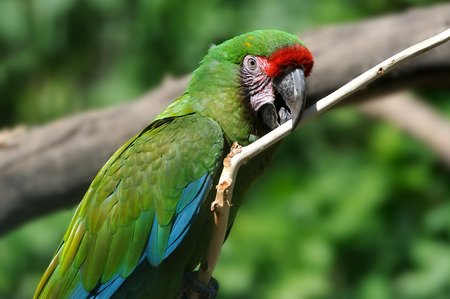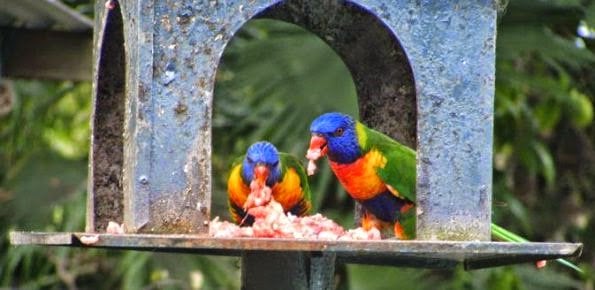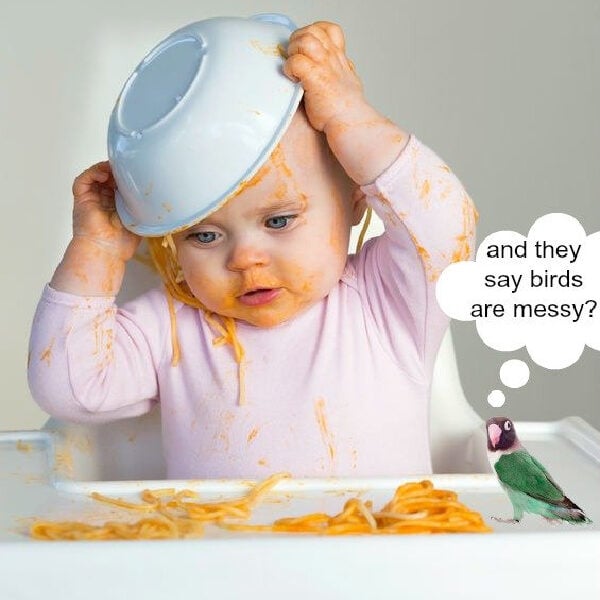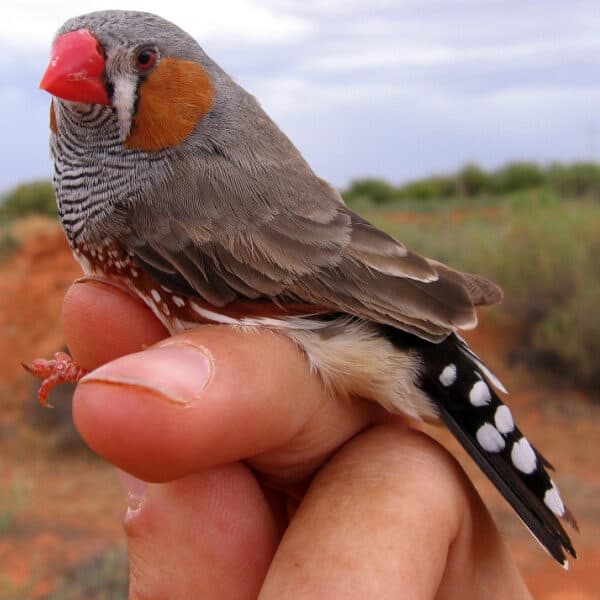Last Updated on by Mitch Rezman
Some of you realize – many of you don’t. The majority of social media posts you read were programmed days or weeks before for “future distribution”. This means whoever is pushing the erudition out won’t be around when you’re reading their content to actually engage you in a discussion about this new important “message” from the person or brand you are following.
Water from a fire hose is fine for putting out fires, but you can’t drink water from a fire hose and you can’t water plants with a fire hose. Getting information from social media is like getting information from a fire hose.
The enormity of knowledge we have access to is mind-numbing. So much so that it has been determined we are unable to decide for ourselves what’s important anymore so the social media “talking heads” have to break it down and ‘splain it to us.
you have your idea of “Talking Heads” I have mine
Facebook, Twitter and Pinterest have introduced “trending now” streams in their infinite rabbit holes of enlightenment so we no longer have to guess what’s important to us anymore. Here at Windy City Parrot we offer our own “trending now” stream – it’s called – “me”.
As early adopters of social media, we learned to re-purpose this fire hose into a controllable bundle of garden hoses.
Leveraging the strength of all the voices in my head to monitor the trickles and the torrents of illumination, we’re focused on finding peer to peer solutions for your caged bird keeping problems – to be continued:
A recent inquiry from a human. (we’re species agnostic here)
Hello, I love your weekly newsletter! It has been very insightful and informative to me. Now, I have a question for you. I have had my severe macaw for about 20 years now. Hard to believe!
I have known him from a tiny chick when I was helping my friend take care of and feed baby birds. She was working for a breeder and hand-feeding baby birds.
I handled a lot of the babies to help socialize them. At the time I didn’t have a bird, but, I quickly fell in love with Mac, who is my bird.
Before I brought him home, both my friend and I tried to get him wean off hand feeding formula.
He totally wasn’t interested in any other food, even pellets. I would take him out of the bird room, while my friend was feeding but, he just knew and wanted his food.
Finally, I got him to eat bananas and a few other things, but he still didn’t like pellets. So he has survived all this time on “people” food.
He loves most of the things that I give him. His favorite is omelet filled with lots of veggies. He is of course partial to pizza, but only when we have it, which isn’t every day.
When my boyfriend saw the recent order and read the packages, he jokingly said, “wait a minute, you don’t buy organic for us”.
Anyway, to end a long story, as far as I can tell, he isn’t eating the pellets……….just pitching them on the floor. Help! Do you have comments or suggestions? I always look forward to your newsletter each week.
Thank you, Denise Carlin
Location: CO
Review: I have tried for the last three weeks to slowly introduce my Blue Fronted Amazon to Higgins InTune to absolutely no avail.
She has left everyone in her dish no matter how I have tried to disguise it. I’m looking for somebody to take it off my hands. I am not complaining about the food but it doesn’t help when my parrot won’t eat it at all.
Rating: 2
Editor’s note: “My bird doesn’t like it” does not constitute a bad product thus in most cases the review will not be posted but will be addressed publicly or with the individual human. Endnote
Let’s talk about that people food thing.
People food is great, it must be. Just walk into any Walmart and look around at all those healthy people in the store – clearly radiating health from eating all that people food. Ironically you’ll see people with great physiques in gym franchises not eating people food but drinking liquids looking like pre-surgical nuclear marker liquids and what in my day were considered candy bars.
Learn how un~nutritious people food actually is by reading
Pit stop – hey all you protein bar addicts – check out the nutritional label on a PayDay peanut candy bar – you’ll find it’s pretty close to most $4 protein bars except that it probably has more protein & less sugar while being a hell of a lot tastier at half the price.
Not posted-> Review: My bird does not like pellets. He is spoiled that way. He will sometimes poop in his food dish to express his displeasure with the remaining pellets.
He likes Zupreem better than others tried or maybe I should say he dislikes it less. He has not pooped in his food dish since I started using this bag but I fear most of it will be found when I clean the bottom of his cage.
What a world-renowned avian veterinarian has to say about one pellet bird food
Sorry, I can’t say nicer things about what seems to be a quality product. It smells wonderful to me. He is just a finicky eater who prefers nuts, seeds and the food off of my plate.
Full transparency. We do not rely solely on all the voices in my head for data analysis, we regularly use math.
Our scientific method for determining trends is to examine the influx of emails and questions via dozens of alternate digital venues finding us through multiple monitors, devices and screens.
Next, we segment the information.
Who is asking the really important questions? How are they asking the questions? Is their species recognized by science?
Using an elaborate macro on the dataset embedded into a Google sheet.
We determine that not one parrot, bird, psittacine, hookbill, softbill, waxbill nor hornbill had emailed, Tweeted, Pinterested, Facebooked, Reddited, Digged, Tumblrd us with any questions about bird food pellets whatsoever.
The message regrettably has been lost on our birds.
I’ve often said that causation does not necessarily imply correlation BUT I’m going to go out on the perch here and make the assumption that in terms of nutrition – birds just want what they’ve always wanted from the beginning of time – not to be hungry.
Parrots in the wild are scavengers that will eat anything in order to survive. We bring them into our homes and in your case Cynthia a 450 g feathered creature is now dictating to you what he or she will or will not eat.
Nectar slurping lorikeet turns carnivore when its appetite grows (above)
To further complicate your situation my guess is you are trying to convert your bird from a seed-based diet to a pelleted diet which makes the task even harder. Not to worry we’re here to walk you through this.
Keep in mind there are no pellet trees in the rainforest. Some birds flat out don’t like say the banana-shaped pellets in this Zupreem blend as an example. Your bird might be reacting to a shape or color, not the food itself.
You can test for this during one of your regularly scheduled training sessions that I know you practice. Introduce a single fruit shape Zupreem pellet in place of a favored training treat to see if the bird reacts differently to different sizes, shapes and colors.
Remember when introducing a pellet you’re not introducing a new food, you’re introducing a new substance.
Let’s examine some conversion protocols:
- Try leaving your bird’s regular food and the new pellets side-by-side in the cage all day. Remove the regular food leaving only the pellets at birdie bedtime. When she gets the nighttime munchies she may be more amenable to the new pellet food.
- You can take a small handful of the pellets, wrap them in cheesecloth if you have it if not a clean dish towel and then smash them into smaller particles with a meat hammer or rolling pin. Sprinkle the “crumbles” over the existing food and see how that goes.
- Think about introducing something like coconut oil to make things more palatable – here’s a video on how to do that
We’d be thrilled to get feedback from you on any of these ideas
We talked about size shape color and texture earlier with regards to how your birds perceived it. The flip side to that is a pellet like Tropican
or Harrison’s Lifetime Coarse size pellets may encourage your bird to eat with their feet. This not only promotes good nutrition but good foot health.
Here’s where we shift to four-wheel-drive and take a little off-road jaunt which may lead to a rant
To all the Facebook bird profiles that post in bird groups about “healthy” bird nutrition ideas.
-
“holistic” is an adjective, not a noun.
-
you cannot make holistic bird chop.
-
you cannot make holistic bird food.
-
you cannot make holistic anything.
-
please stop saying your food is “holistic” it’s not!
-
before believing “because it’s organic it’s better” read this:
ho·lis·tic – ho’listik – adjective
characterized by comprehension of the parts of something as intimately interconnected and explicable only by reference to the whole.
relating to or concerned with wholes or with complete systems rather than with the analysis of, treatment of, or dissection into parts <holistic medicine attempts to treat both the mind and the body> <holistic ecology views humans and the environment as a single system>
<holistic caged bird keeping views humans, birds, birdcages, birdcage interiors, the human’s home (including other animals) where the cage resides, what the bird eats and does not eat – as a single system>
So when I saw the words “The cage I have has too few bowls” dribbling out of a garden hose – I reacted poorly
“The cage I have has too few bowls” – in bird speak translates to “I have visited McDonald’s too few times today”
Some weird avian force guided my trackball hand to find this information as it relates to humans:
Binge Eating Disorder – that’s right the human disease
Binge eating disorder (BED) is an eating disorder characterized by recurrent episodes of eating large quantities of food (often very quickly and to the point of discomfort); a feeling of a loss of control during the binge; experiencing shame, distress or guilt afterwards; and not regularly using unhealthy compensatory measures (e.g., purging) to counter the binge eating. – Has your bird regurgitated on you lately?
Binge eating disorder is a severe, life-threatening and treatable eating disorder. Common aspects of BED include functional impairment, suicide risk and a high frequency of co-occurring psychiatric disorders.
Eating large amounts of food when not feeling physically hungry.
Could filling a cage up with a dozen dishes brimming with food contribute to this?
Your bird is locked in its cage for 10 hours a day – can this lead to:
Disruption in normal eating behaviors, including eating throughout the day with no planned mealtimes; skipping meals or taking small portions of food at regular meals; engaging in sporadic fasting or repetitive dieting; and developing food rituals
editor’s note: holy crap -> e.g., eating only a particular food or food group – leading to High blood pressure – High cholesterol levels – Heart disease Type II diabetes – Gallbladder disease Fatigue – Joint pain – Sleep apnea
but your bird is in perfect health and you know this because you weigh it on a regular basis and record those weights – right?
So I decided to blend the “The cage I have has too few bowls” thing with the “Fixing the my bird hates pellets but I love pellets enigma” thing.
One of my favorite illustrations of the open bowls of food vs foraging thing is this video. Here’s an African gray with two cages, both cage doors open. One of the cages has several dishes filled abundantly with food.
The other cage is filled with interactive bird toys that challenge the bird to work for the food. Once you understand birds you will understand that it’s no surprise this African gray chooses the cage with the food that is much harder to access.
Lesson learned: it’s not just the food, it’s also the delivery – or lack thereof. Are we watching the quality of our bird’s food? Is it within the manufacturer’s “best used by” date? If you bought these new fancy pellets from a pet shop because they looked so pretty in the dispensers – did you ask how long the food has been in there?
Did you ask if the dispensers were sanitized before refilling? Is it possible that your bird is acting to the lack of freshness or possible mold in the food that was bought from a bulk dispenser?
Am I saying that having a feeder filled all day with a favorite food is wrong? No. but 5 bowls filled with five of the most expensive bird food blends you can find because you’re feeling guilty that your bird is locked up for 10 hours a day is not doing your bird any favors.
I ask how much of an effort does it take to go from this
To this
Start here: Create a nature-like forging environment using some crushed and whole pellets sprinkled with a favored treat like millet to make mealtime more interesting – here’s a video on how to do that:
Move on to trying interactive toys
I think we made some progress – squawk at you soon.
Written by Mitch Rezman
Approved by Catherine Tobsing
Author Profile

Latest entries
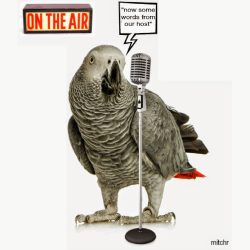 Bird & Parrot CareJune 20, 2025Understanding the Best Way to Use Prevue Pets Mimic Me Voice Trainer
Bird & Parrot CareJune 20, 2025Understanding the Best Way to Use Prevue Pets Mimic Me Voice Trainer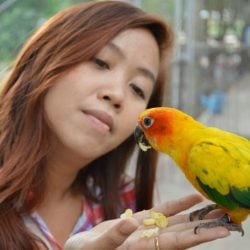 Bird BehaviorJune 6, 2025How Do I Keep My Parrot From Dumping His Food Every Day?
Bird BehaviorJune 6, 2025How Do I Keep My Parrot From Dumping His Food Every Day?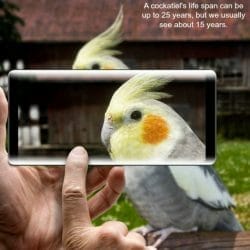 Birds & LightingMay 16, 2025I Am Seeking Clarity About Lighting for My Birds Cage
Birds & LightingMay 16, 2025I Am Seeking Clarity About Lighting for My Birds Cage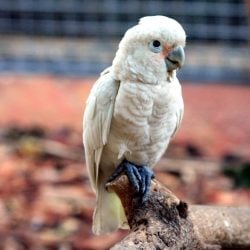 Bird RescueApril 29, 2025How Do We Re-Home a 17 yr Goffin Cockatoo?
Bird RescueApril 29, 2025How Do We Re-Home a 17 yr Goffin Cockatoo?

